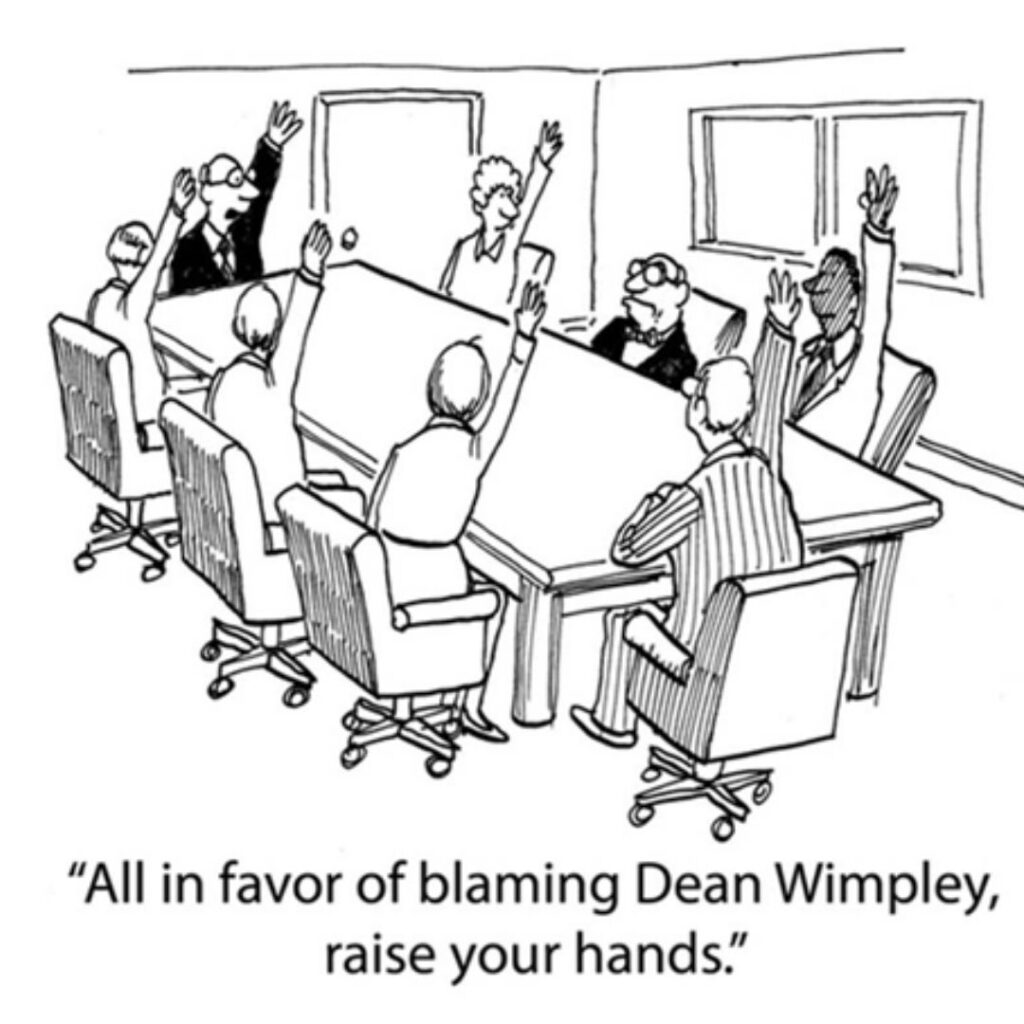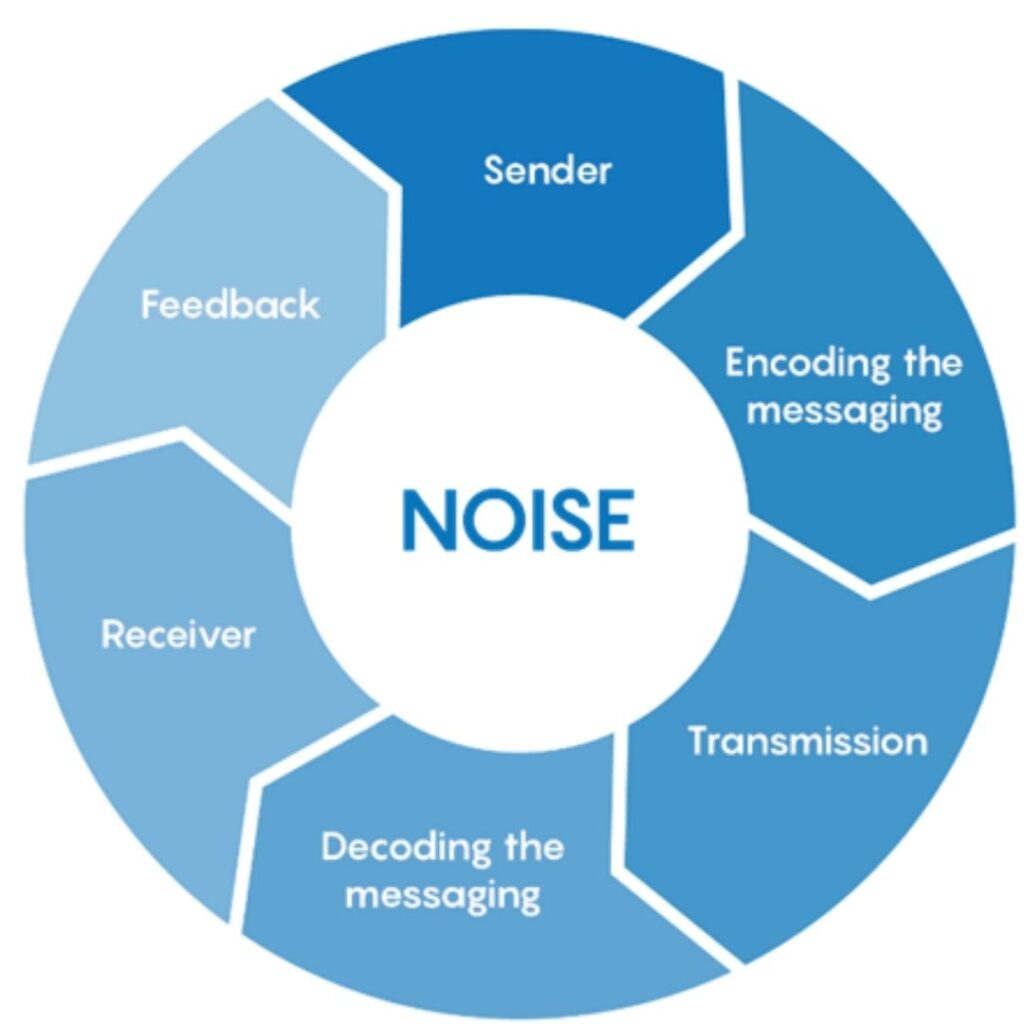

A few years back, I was invited to a meeting that was promoted as the opportunity of a lifetime. Our host had gathered fourteen potential investors for a new hospital. All were sitting tall, waiting to hear what we were told was a killer presentation that would make our decision a literal “no brainer”.
Unfortunately, when our meeting was to start, our host couldn’t find his presenter. Later, we would learn the pitchman was in one hotel conference room while his audience was in another.
In fact, he never showed up for the meeting with us at all. But it turns out he had an audience. Later, we would learn that five people came into his conference room, sat down, and listened to him for about twenty minutes before someone raised a hand and asked what the presentation had to do with life insurance. They were in the wrong meeting too. Somewhere in the process of setting up both events, critical communications did not occur or they broke down.
Who was to blame? Did it really matter? The sad reality is that what happened in this case happens all too frequently, all around us every day, in a variety of ways, and the consequences are often catastrophic. They are the tip of an iceberg. What we have every day in a variety of similar ways is a failure to communicate.
If There is a Possibility of a Communication Failure, Expect One!
As frequently as we see communications failures, we ought to expect them, if not anticipate them. We should plan for them if we can’t preempt them. But we don’t. For some crazy reason, we seem to enjoy making ourselves the victims of poor communication. Here are eight major reasons communications are so poor in most organizations and business situations.
- No Communication Plan – Too often we just start talking without really thinking about what we want, and need, to say. If you want to improve your communications immediately, stop for ten to fifteen seconds to consider what you want to say and how you want to say it. You just made a plan. Execute it when you get the chance. Then think about how it felt. I bet you’ll start doing more instant planning of your communications.
- You Do Not Communicate Effectively – Communication is a closed-loop process. Don’t start talking until you see in your mind’s eye the outcome you want from the communication. Then tell the receiver of your communication what you want and why it matters to them and then to you. Starting the other way around just doesn’t work. Think about what you want the other party to get out of it, then frame the communication to get that result, but make them the beneficiary. Everyone really just wants to know what is in it for them. In the end, effective communication is nothing more than the receiver understanding the message as the sender intended. Your job as the sender is to eliminate noise (interference with or disruption of the message). The best way to ensure effective communication is to ask the receiver what they understood. We almost never test the process for success. If you do and you don’t get the answer you want, start the process over.
- Sending Irrelevant Information – Don’t confuse the issue. There’s no use in sending or receiving a message that does not apply at all to whom it is sent. Make your audience specific. Less is more in the number of people being communicated with in any one transaction and also in content. Strip away the stuff you don’t need or the receiver doesn’t need in your messages. Actually, practice brevity in your communications planning, keeping it simple. Make the SMART objective acronym part of your planning process. See yourself being brief and specific. Make what you ask for or share measurable and achievable, so the receiver can see what they are expected to do. If your message confuses the receiver, they’ll never see themselves responding, and then they probably won’t. Everybody is time sensitive. If your message has no relationship to time, if time is not a measure of the success of your communication transaction, you won’t see success.
- Unopen Lines of Communication – Ensure the intended receiver of your message is on the same channel. This is more important than you think. Look through the receiver’s eyes when you prepare to send your message. If their eyes aren’t clear and bright, if their mind is somewhere else, you aren’t on the same channel or wavelength. Something is going to go wrong in the transaction. If you have a doubt about channel-lock, ask, “Hey, are you tuned in?” Get your answer, then go. The question alone creates the essential lock. This can be a bigger issue too. If you use email as a primary tool and your receiver doesn’t, whose problem is it? Well, if getting the message to the receiver is important to you, you must find the best channel for your message to get to them.
- Looping In and Looping Out – This is a tough one. When should someone be in a communications loop or taken out? If someone has not been in the loop but now needs to be in it, how do you make that happen? The answer is probably situational. But developing the discipline of communications planning will probably help in most circumstances. If you think about the parties involved in the messaging you want to effect and the actual message you want to create to produce a particular response, key players will start popping into your head. You will find yourself asking yourself, “Is this someone who should be looped in now?” Keeping people in the loop about where they stand, sharing what might impact them, and sharing how things are going, provides them with a feeling that they are actually a part of things and gives them a stake in what’s going down. If in doubt, go for inclusion. Keeping them out of the loop makes them less likely to care about anything other than getting done what they’re tasked with getting done. Typically, people in the loop are more productive and more emotionally invested in achieving the intended result.
- No Platform for Workplace Communication – If people do not have a formal way to express their feelings, they will create an informal mechanism. In fact, informal mechanisms can become very powerful, with positive and negative implications. Generally, we are best served by creating formal communications structures within an organization and encouraging their use. Where such formal structures are in place, overall communication within an organization, at the formal and informal levels, are most constructive. People like to use a structure they can trust and capitalize off it to create order and consequence. Organizations should proactively provide a secure communication platform.
- Stressful Work Environment – A stressful work environment strains communication. Stress occurs when employees are feeling underappreciated and overloaded, and the company is understaffed. Stress in the form of fear prevents people from sharing information when they should. Fear is an awful thing. Drive fear out of your communications. Unless actually dealing with a punitive or corrective action, never use threats in the context of communication. One hundred percent of the time, doing so negatively impacts the quality of a communication.
- Incorrect Mode of Communication – Different interactions require different modes of communication. The topic and urgency of the message must define what mode of communication is appropriate. In general, there is no substitute for face-to-face communication. Any other way of communicating is a poor second.
“Ah, here comes the finger-pointing!”

For almost four decades, my work has involved helping operationally and financially distressed hospitals and healthcare delivery systems turn themselves around to become vibrant again. My process always begins with a single question, which I ask of the current board of directors, senior leadership, managers, and staff. Whenever possible, I have extended asking the question to customers and clients of the business as well. The question is, “What is the single biggest problem you see in this organization?” Years ago, I stopped being surprised by the answer I received ninety percent of the time. That answer was, and still remains, Poor Communication.
The declaration, no matter the constituency from which it comes, is always followed by some variation on the theme, “This place would run so much better is only they would communicate better”. At this point, I am now prepared for what comes next: the finger-pointing. Boards talk about how their CEO doesn’t keep them informed. CEOs talk about how board members just don’t listen to good counsel from management, how they don’t share their issues until things are too far gone to address, and how they get involved in things they shouldn’t. Senior leadership teams complain that the CEO doesn’t seek their input and that he or she continually acts in their areas of responsibility without informing them of his or her intentions. Managers complain that their senior leaders never listen to them, never seek their advice. Line staff complain that “upper management” (anyone above them) is constantly making decisions and not informing them of changes.
When all this finger-pointing occurs, I am surprised that so few people see that communication is a system, that they are part of the system, that they could be contributing as much to a breakdown in that system as is anyone else, or that they could be part of the systems-solution to correct the situation.
“Situation Normal, All Fouled Up” – SNAFU
Whenever I see people in an organization believing that miscommunication and lack of communication are “normal” and that the consequences they have for organizational performance are just the way it is, I know it doesn’t have to look like that. There is no question that looking closely at communications across the board and effecting conscious change in processes can immediately improve operational and financial performance with bottom line impact.
I was once brought in with a team to address a bond covenant violation at a community hospital. The hospital was seriously close to default and closing the doors. I asked the board if they had spoken with the banks to restructure their loans. One board member quipped, “We talk to the banks as little as possible now. The less said the better.” I called the bankers in and had a face-to-face. I came clean on our situation and told them our plans to turn the hospital around.
One on the bankers said on behalf of the group, “We never wanted to be the reason the hospital shut down. The community needs a hospital. However, no one here was talking to us. All we could see from the outside was a SNAFU. The fact that you called us to talk makes a huge difference.” The banks restructured our debt and over the next few years participated in a successful turnaround of the hospital. We actually set a regular weekly meeting that kept the channels of communication open through the ups and downs on the road to recovery. At these meeting, we executed a negotiated communication model that ensured they had the information they needed to continue to support our initiatives, often providing the hospital still more working capital. They understood we were not in a SNAFU
"Who’s Responsible for Effective Communication?”

See, the situational solution for the hospital was recognizing just who had the responsibility to communicate and who had the most at stake in a failure to communicate. The hospital could only lose by not communicating with its banks and bankers. So, it was critical that the hospital not just communicate with them; the hospital also needed to ensure that our communication was heard, that our message was understood as we meant it to be, and that it produced the response we wanted.
At our weekly meetings with our bankers, the hospital management team would present the progress of ongoing initiatives, present new initiatives, and discuss successes and failures. Along the way, we would elicit feedback and support with just the simple question, “What do you think?” We met our responsibility to communicate and challenged them to fulfill their responsibility to communicate with us. How could they not support our initiatives when we gave them every chance along the way to own them with us? If they did not agree with what we were doing but kept silent, the burden was on their shoulders. In truth, I understood the banks had at much or more at stake in the hospital turnaround than did the hospital. Defaults do not look good in a bank’s portfolio of loans. In addition, what bank wants to force the closure of a community hospital? The banks needed to hear what we had to share with them. In their own interest, they might have pressed the discussion. The sender and the receiver share equal burden in completing the communication cycle. Bilateral feedback cements closure in the loop.
“Hear What I Think, Not What I Say!”

It is not enough to just commit to communicating. Effective communication is a process. As with any process, each step must be understood. Understanding is about more than knowing each step of the process and how it works. It is also knowing what could go wrong and being proactive to ensure there is no opportunity for breakdowns to occur at weak points. Weak points exist wherever the message transfers. In even the simplest communication, there are a number of transfer or impact points. What is in my head isn’t necessarily what comes out of my mouth. What passes across my lips isn’t necessarily what reaches my listener’s ear. There are many different kinds of noise that can distort my message.
Since I do a lot of work internationally, I have become very aware that native languages and cultures affect business language. Often, my message is heard exactly as it was sent, but the culture bridge it crosses changes its meaning. Age difference also distorts the message if not monitored. I remember as a fifteen-year-old telling my mother her dinner meal was “Bitchin’.” I was a beach rat in Southern California and that word in our surfer language meant “outstanding”. My father, who whacked me upside my head, saw the word as a profanity.

Here are some simple things all of us can do to improve communication.
● Avoid Rushing the Process – See it as a process with discrete steps. As you plan your communication, see each step in the process. Identify potential weak points and plan how you will move across them without breakdown. Then, watch what is happening during the process. “Feel” for whether the message is being received as you want it to be.
● Confirm You Are on The Same Page – Don’t rely just on your senses. Ask how your message is coming across. Don’t just accept a nod of the head. Get real feedback. ● Encourage Questions – Tease out questions from the receiver. Questions demonstrate better than statements what the receiver understands and how he or she is likely to react. In fact, questions tell you a lot about what your message missed.
● Practice Active Listening – Active listening does more than demonstrate that you are really engaged. Active listening reveals nuance in and for the Sender and the Receiver. No communication is really complete or effective without consideration of nuance and what it reveals. Body language and facial expressions are nuance and often reveal more than words, spoken or on paper ever could.
“What Beats Tin Cans and String?”

When you read an email, you exhibit facial expressions and body language. When the author wrote the email you are reading, he or she exhibited facial expressions and body language in the process. The problem is that body language and facial expressions aren’t shared in the communication.
Any other form of communication is a poor second to face-to-face conversation. In a perfect world, all communication would occur face-to-face. That simply isn’t practical today. However, when we have the opportunity communicate face-to-face, we should take it. The likelihood of having a communication breakdown and a subsequent SNAFU increases as we move down the “Preferred Communications Continuum”. Never move down the continuum if you can possibly accomplish the task at a higher level. Resist sliding down the continuum to rest in a comfort zone. Sadly, too many of us today use email and text – not because it is effective, but because it is easier and more comfortable than looking someone in the face. Too many of us have lost or never developed the skill of conducting a tough conversation. So:
- Face-to-face first;
- Then, webcam with sound;
- If not possible, use a phone;
- Only then, resort to a letter;
- If not practical or time-efficient, then shoot off an email; and,
- Text only as a last resort, or as a first resort to set the condition to start at the top of this continuum.
“Don’t Lay Blame – Own It”

With respect to the communication SNAFU I shared earlier, I’ll add that a number of people spent good energy ensuring they were not held accountable for fourteen people coming for a presentation that didn’t take place or they spent time trying to make it all right. All this is like locking the barn when the horses have all escaped. If there happens to be a dead horse, don’t beat it.
Communication breakdowns are going to happen until they don’t. What that means is that we eliminate them by acknowledging them and debriefing them. We shouldn’t do so to fix blame. Nobody wins in that game. We should do so as partners in the process to ensure that whatever caused the problem is addressed and avoided in the future. If you are ever caught in the middle of a communication SNAFU, declare, “I own it!” Take the lead and bring the stakeholders in the process together to identify the points of breakdown in the system. Together, address the breakdowns with systems solutions to increase the likelihood that those particular breakdowns are less likely to happen in the future.
Ways To Improve Communication and Avoid Communication Breakdown
Following are a few ways to encourage clear and efficient communication.
- Have an Open-Door Policy – Encourage an open-door policy throughout your organization. Regardless of the position you hold in the organization, let people know you value effective communication. Let people know you are open to dialogue.
- Put It Down in Writing – If it is important, put it in writing. If it isn’t in writing, it doesn’t exist. Most miscommunication occurs when something should have been put in writing and wasn’t. All directives should be put down in writing. This to avoid misinterpretation. If in doubt, write it out. When ordering an employee to do something, it should be put down in writing. In fact, every important task and responsibility should be written down as well as verbally communicated to ensure that the parties to the communication understand exactly what their task or responsibility is and the reasoning behind it. Putting it in writing helps reduce the risk of misinterpretation, and it preempts finger-pointing.
- Create a Communication Plan – Everyone should have a communication plan for every situation. This should provide information as to what methods of communication should be used to deliver certain types of information as well as guidelines for who to contact for certain situations.
- Focus on Culture – Creating a positive work culture helps reduce stress, making people more likely to engage and communicate with each other. Make it your personal mission to create a culture of communication around you.
- Have or Expect a Meeting Agenda – If you set a meeting, create and distribute an agenda before the meeting so that others can prepare themselves to be effective communicators. If you are invited to a meeting, be proactive and request an agenda from the organizer. By doing so, you will drive culture change within your organization.
- Select the Right Business Communication Tool(s) – Don’t allow yourself or others to rely solely on text messaging or emailing. Implement communication tools that help make it easy for everyone to communicate and share.

